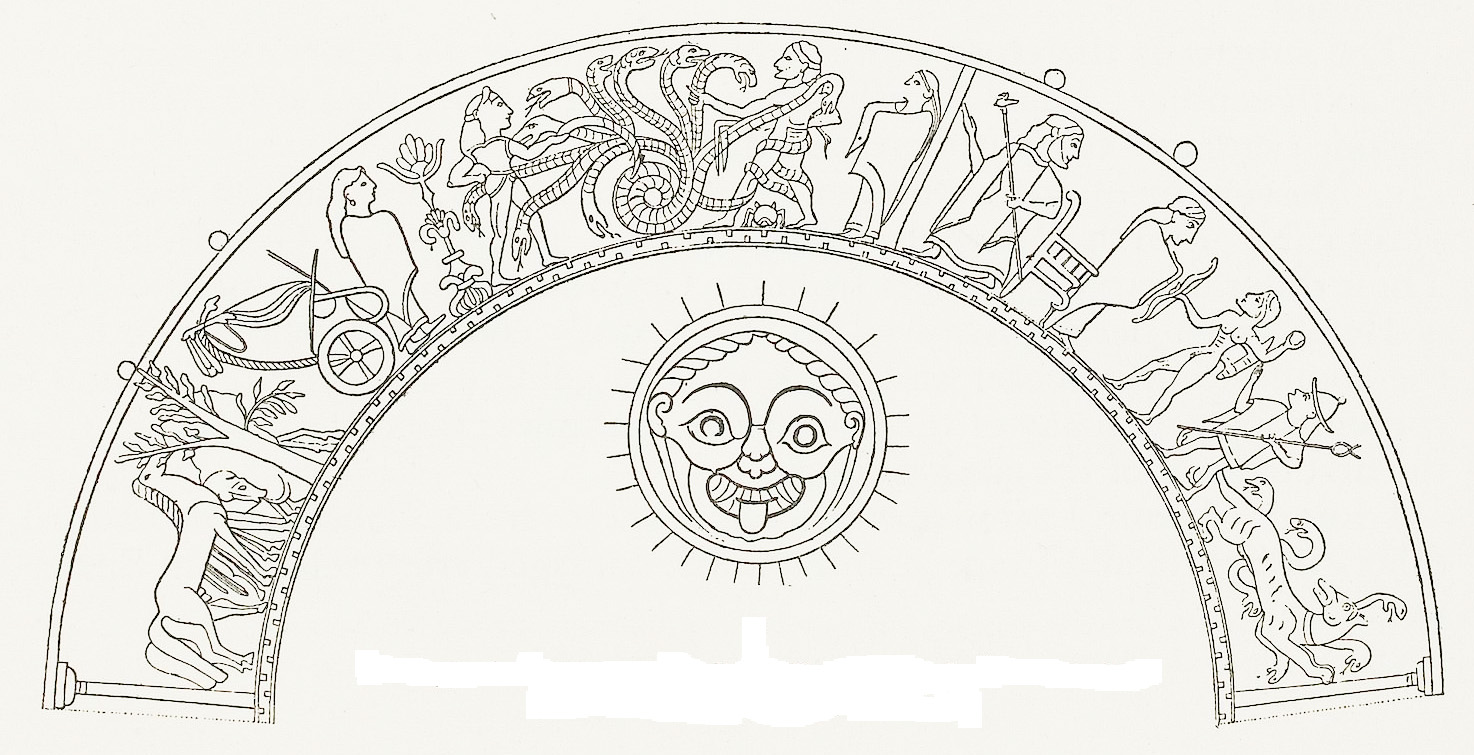Chapter 13: Herakles
Previous Page Table of Contents Next Page
♠ Homer, Iliad 8.367-68
when Eurystheus sent him forth to the house of Hades the Warder, to bring from out of Erebus the hound of loathed Hades. Greek Text
♠ Homer, Odyssey 11.623-26
Yea, he once sent me hither to fetch the hound of Hades, for he could devise for me no other task mightier than this. [625] The hound I carried off and led forth from the house of Hades; and Hermes was my guide, and flashing-eyed Athena. Greek Text
♠ Hesiod, Theogony 310-12
and then again she bore a second, a monster not to be overcome and that may not be described, Cerberus who eats raw flesh, the brazen-voiced hound of Hades, fifty-headed, relentless and strong. Greek Text
♠ Hesiod, Theogony 769-73
A fearful hound guards the house in front, [770] pitiless, and he has a cruel trick. On those who go in he fawns with his tail and both his ears, but suffers them not to go out back again, but keeps watch and devours whomever he catches going out of the gates. Greek Text
♠ Stesichoros 206 PMG – Poetae Melici Graeci, p. 111, ed. D. L. Page. Oxford 1962.
♠ Pindar Fr 249a SM – Pindarus 2, pp. 143, 75, ed. B. Snell and H. Maehler. Leipzig 1975.
♠ Bakchylides 5.56-70
So it was, they say, that the gate-destroying unconquerable son of Zeus of the flashing thunderbolt went down to the halls of slender-ankled Persephone [60] to bring up into the light from Hades the razor-toothed dog, son of the fearsome Echidna. There he saw the souls of miserable mortals by the streams of Cocytus, [65] like leaves swirled by the wind along the sheep-pasturing headlands of shining Ida. Among them, the shade of Porthaon’s bold, [70] spear-wielding descendant stood out. Greek Text
♦ From Argos, now lost: Middle Corinthian kotyle; scene on the right with Hades fleeing, Hades’ throne, goddess (Persephone or Athena?), Herakles threatening Hades with bow and stone, Hermes, and fleeing, one-headed Kerberos with snaky attachments (note that original kotyle may have had a reversed orientation)

Drawings from H. Payne, Necrocorinthia: A Study of Corinthian Art in the Archaic Period (1931), p. 127 fig. 45C
Literary sources edited By Elena Bianchelli, Retired Senior Lecturer of Classical Langages and Culture, Univ. of Georgia, April 2022
762 total views, 1 views today